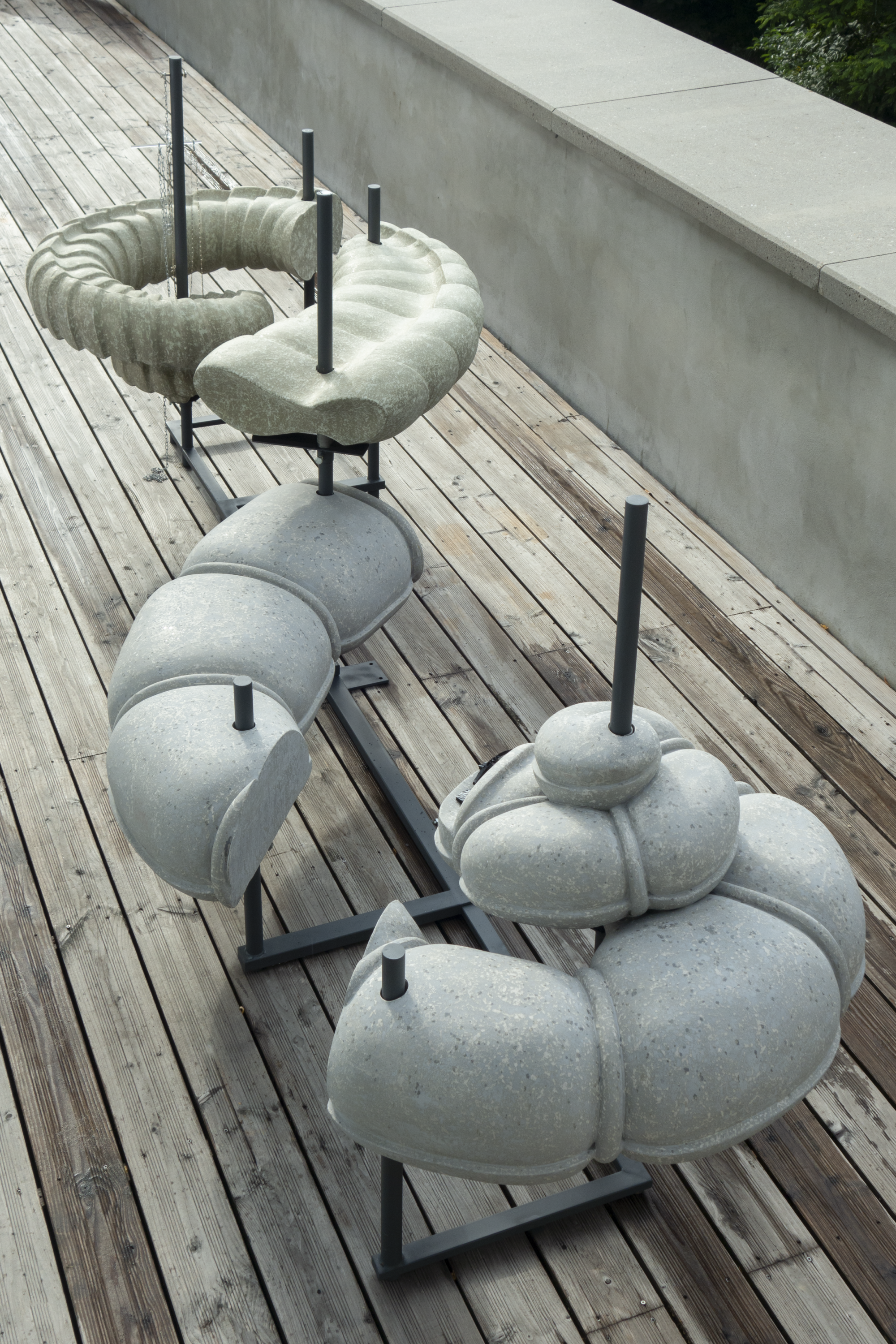Paola Siri Renard
For Paola Siri Renard, sculptures are tools for any individuality, behaviour, to reclaim sculptural and spatial forms through bodily experiments. They are micro-architectures as they invite bodies to physically interact with them ; as they borrow standardised construction laws. Imperceptible realities are shown in a tangible way. Those architectural, spatial, but also cultural and normative datas are enlightened as much as they are distorted, showing how they condition and dominate our interactions to people and environments insidiously.
Paola Siri Renard reintroduces structures and materials removed from their circuit of use, from domesticated and urbanized environments. The transcription process isolates and rescales generic ornaments giving them autonomy stripped from any context. They acquire their own (dys)functionality. They are no longer reduced to their aesthetic, historical value, and embody a meaningful symbolism. The anachronistic dimension of forms tends to create interfaces that desecrate architectural orders. Paola Siri Renard reveals normative aesthetic codes which spread across centuries, in parallel with injonctions which neglect bodies, identities. It is a question of revealing the formal grid, but also the social and even political structures which shape our objects and organize our lifestyles.
By manipulating it, it’s the body’s turn to besiege this ruin of domination. The domination that slips into the constraining forms is tamed and the balance of power is overturned. This reappropriation of these objects and spaces is a pretext to talk about the treatment of designed heritage, mostly stemming from an exclusive society. The shape of the test-instruments suggests travel : they can be seen as imaginary displacement engines. It questions the correlation between circulation of besieging forms of art and design and specific identities exclusion. The body, object of the experiment, is always placed as a reference. Ornaments are cut in pieces allowing multiple movable positions, adapting to various intended uses or interactions. The sculptures acquire an awareness of themselves as a meaningful ornamental form but also as an object ready for engagement. Deconstruction is at the heart of the process figuratively in the social and historical scope ; concretely in their unstructured silhouette.

